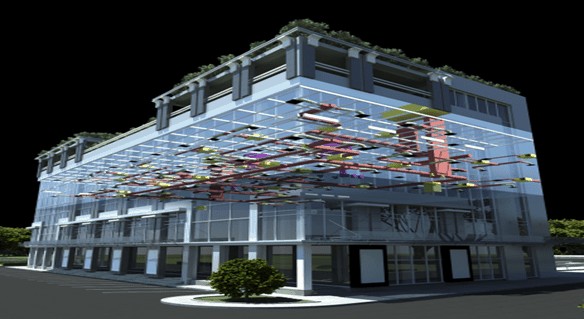
The theory of evolution from Charles Darwin (1809-1882) is one of the greatest contributions ever made to science and posibly to mankind. Darwin was a prolific person fathering 10 children and creating numerous famous quotes. There is one particular quote that defines his work and his legacy; the survival of the fittest “It is not the strongest of the species that survives, nor the most intelligent that survives. It is the one that is the most adaptable to change”.
For any business and especially for a company like Ferrovial, embracing change and new technologies is part of our DNA and with a much more dynamic and demanding industry, evolution and adaptation is the only way forward.
The British Government has always been bold in vision and in the avant-garde regarding embracing new concepts and technologies. The decision taken in May 2011 to publish the Government Construction Strategy represents a very welcome approach to help shape the future of our industry. The paper called for BIM (Building Information Modelling) adoption on UK Government construction projects of £5million and over and announced its intention to require collaborative 3D BIM (with all project and asset information, documentation and data being electronic) on all its projects by 2016. In that Strategy paper, the British Government has set the standard for the infrastructure industry in XXI century and BIM will be a critical element to achieve these goals.
There is of course a reason behind this and it deals with the improvement of efficiency. An efficient construction industry was highlighted in the plan for growth as of critical importance to the UK’s economy, representing 7% of GDP. That means an overall £110bn per annum of expenditure. As much as 40% of this figure is being spent by the public sector and the central government is the industry’s biggest customer. The overall aim of the report was to reduce costs of government construction projects by 15-20%. Those savings will be reinvested in other government projects.
Traditional building design has been mainly relying on a 2 dimensional approach. It was not until the 90’s that 3D improved the way our projects and buildings were designed. However the whole picture would be incomplete if this was not integrated with the other 2 critical elements of the performance in a project; programme and cost.
Hence BIM goes beyond geometry and deals with what should be included rather than what is excluded. Therefore there is no limit as to what this concept could be about, that should include all the standard analysis we carry out in our projects, ranging from light analysis, geographical information, manufacturer’s details, quantities and so on.
Based on that approach, the vision and the concept of BIM itself fits so well in what Ferrovial represents and in our core businesses, that if it had not been created, we would have invented it.
A global Ferrovial, through the range of its business activities, completes the infrastructure’s lifecycle and buildings from the design and construction phases up to maintenance and operation. The use of 3D modelling incorporating the necessary parameters and information for each stage of the process will facilitate the life sharing and modification of such details. This is the very foundation of BIM and it will help us to shape the future of the infrastructure of the XXI Century.
There are no limits to improvement, knowledge or adaptive change. Innovation applied to all the design phases of a project, the planning and the standardization of processes are fundamental in order to improve efficiency and productivity, and BIM is the right tool to achieve those goals.





There are no comments yet